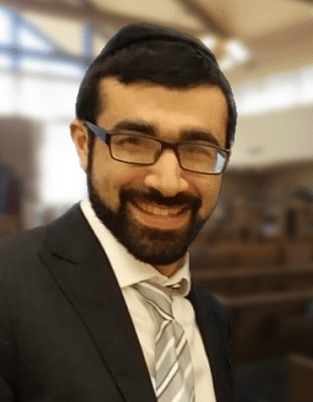By Rabbi Binyomin Halpern

Rabbi Binyomin Halpern
(AJNews) – At our recent HOJMI Purim Seuda (party/feast), we played a “family feud” style trivia game with shul themes. One of the questions was, “what is your favourite Jewish Holiday?”
The options were Purim, Pesach, Chanuka and Taanit Esther, the fast day before Purim. (Yes, we had respondents who replied Taanit Esther in good Purim humour J.) Which one would you choose? Interestingly, from our respondents ahead of time, and during the game, the majority of people chose Pesach. In discussing this question with some Junior High students at Halpern Akiva Academy, some of the students were surprised, and said things like:
“Pesach is so much work!”
“The entire house needs to be deep cleaned as if Her Majesty the Queen was coming for a visit!”
“We need to get rid of all the chometz including the cheerios pieces under the coach, and I don’t even like macaroons!”
But as the discussion went on so, one student made the following point: “Yeah, it is a lot of hard work, but Pesach is my favourite holiday because my family comes to visit.”
Now, there are a lot of reasons why Pesach is the most important holiday from a philosophical and Rabbinic literature point of view.
Yet, I agree that so much is added to the power and joy of the seder because we do it together with family, biological or community family.
The seders for the last two years were especially challenging as almost none of us had our families with us. This unfortunately presents us with an additional challenge. With time, memories, – even strong enjoyable memories – fade. It would truly be tragic if we were to forget or allow to dissipate, the memory of how much we enjoyed and looked forward to sitting around the table together for Pesach.
One of my favourite parts of Seder preparations is taking a fresh look at the haggadah.
This year, as I crack open my haggadah, the following thought is hitting me about the Seder experience.
The mitzvot and customs of the evening make something very clear. In the seder, we don’t only focus on the oldest and the most knowledgeable. In fact, this is a night and an experience that is truly meant to include everyone, (all ages and intellectual capabilities).

Firstly, it is the kids who are the ones who ask the mah nishtana. The word ‘hagada’ itself does not mean to recite but rather to tell someone else, ideally someone who knows less than you do. In our home, candies are distributed to the kids (and kids at heart!) for asking good questions. So much of the night revolves around specific foods that we must all eat, and songs which we all sing. These are things that we can all relate to no matter our IQ or our place on the hierarchy.
However, there are challenges that come along with coming together. It means we actually have to be together. For those of us who have been home alone, it is a very quiet experience. When you are alone, though, there is no one to argue or disagree with you. Even the news feeds you read can be tailor-made to your views and opinions. But when Uncle Henry comes back this year to join for the Seder, and we are of course overjoyed that he is coming, he will probably bring with him all of his opinions about tulips, matza, and Israeli square dancing. He may even bring these topics up (as he does every year.) We will have to do our best to argue politely, change the subject or perhaps even listen patiently.
Even in the haggadah itself we see this interplay fully on display in the personalities of the four sons; the wise son, the wicked son, the simple son, and even “eino yodaia lishol,” the son who is unable to begin a conversation. One can only imagine the spirited discussion, and seder experience these four will have together, with their parents hopelessly trying to maintain order and decorum. (This is especially true if the four of them range in age from rebellious teens to crying infants as per the authority of the haggadah illustrators.) Personally, I picture the “eino yodaia lishol” infant hurling matza balls off his high chair, and the rasha quietly slipping a piece of horseradish into the cup of wine of the chacham, who is furiously trying to ignore everything going on around him and focus on the proper pronunciation of the words of the haggadah!
Therein lies the beauty of the Jewish people and the seder experience. Though we can disagree, and vehemently so, we know that at the end of the day, we fight as family and cannot imagine spending the Seder anywhere else.
Perhaps this year we can truly cherish and celebrate the challenges and opportunities that we have, to once again gather together around the seder table.
Rabbi Binyomin Halpern is the spiritual leader at House of Jacob-Mikveh Israel in Calgary.




Be the first to comment on "Rabbi Binyomin Halpern: Flying Matza Balls"